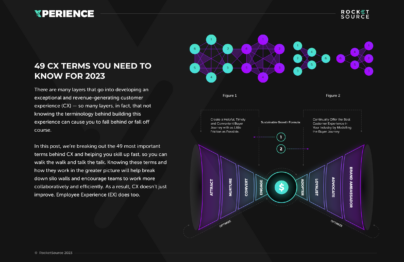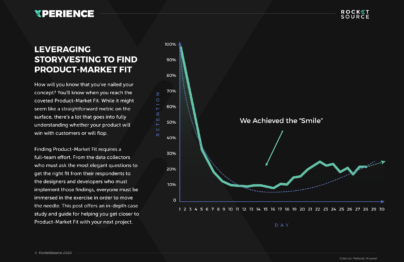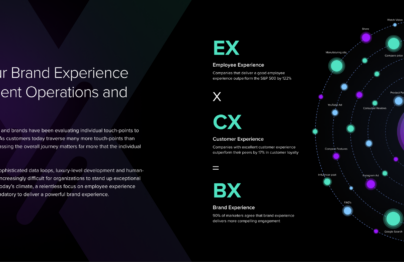Embedded intelligence is a technological process where a system self-manages its performance. This self-monitoring approach allows the system to autocorrect and tune its operations, but that’s just the beginning. Embedded intelligence also brings back important business process data for teams to process, analyze and optimize.
These systems are most effective when infused into workflows. Embedding intelligence and analytics into software or physical sensors allows teams to gather data and put it into a dashboard that’s easier to disseminate across the organization. Aggregating data about how programs and processes work equips teams to keep a closer pulse on what’s happening throughout the organization. Because this type of intelligence is all self-referential, it can compare what’s happened in the past with what’s happening in the present, allowing both teams and technology to spot patterns and identify when something is amiss.

Using Embedded Intelligence Across the 3 P’s
Having embedded intelligence in place to spot friction points and identify areas for process improvement allows teams to streamline the 3 P’s — people, processes and platforms. Not getting these three areas right can be incredibly costly for organizations.
A solid team of vested employees who are constantly eager to learn and move forward is important. It’s crucial to give vested employees the processes to streamline their roles and the platforms to deliver quality intelligence and simplify tasks is crucial.
Embedded intelligence allows teams to operate more efficiently because they can stay focused on what the customer needs rather than worry about backend systems running without a hitch. When something goes amiss, employees are alerted and can quickly remedy the situation.


Turning Embedded Intelligence Into Insights
While embedded intelligence is generally self-reliant, there are often rich insights that can be unpacked with a humanized approach. Leveraging this data to create exceptional experiences allows teams to weave together all layers of the StoryVesting framework. This business transformation framework focuses on teams and customers working in harmony.
Sublime experiences start with connected teams and brand advocates who bridge Customer Experience (CX) gaps. This approach prevents teams from throwing ideas out into the wild without strong leadership, sound data, and a strategic approach.
How the Employee Experience Aligns With Embedded Intelligence
Personnel are one of the biggest assets in an organization today. Employees are the ones who take the embedded intelligence findings and translate that data into actionable insights.
Having a vested workforce is crucial to an organization’s long-term success. These vested team players work hard to understand the end goal of their role and the correlated impact on the organization as a whole. When a company focuses on improving the employee’s experience by improving the customer’s experience, businesses can develop a more vested workforce.
As these key players work to analyze and manage the insights from embedded intelligence, they’re better equipped to understand what to look for and how to leverage that intelligence for the organization’s greater good.

Building Digital Transformation Initiatives Around Embedded Intelligence
Integrating information received from embedded intelligence requires teams to make a human connection between the data gathered and a higher-value use of that data for bigger business decisions.

Building More Human Automations
Automation systems work continuously to deliver a sublime user experience. When these systems are optimized, they can gather the data needed to connect people to the right areas of the business. This approach to humanizing automation allows organizations to deliver faster, more personalized help when the customer needs it.

Event Triggered Growth
Levers
Analyzing how customers use a product can highlight specific events along the customer’s journey that could cause churn. Gathering this intelligence and using it to address customer needs at the moment they arise allows organizations to operate more intelligently. With insights from embedded intelligence, teams can build out more event-triggered automation and use them as growth levers.

Identify Security Concerns Faster
Embedded intelligence can identify security measures in devices and systems — and can alert teams when things seem out of the ordinary. Automated data collection methods, such as embedded intelligence, allow teams to build inherent security measures.

Real-Time Analysis
Embedding intelligence-gathering mechanisms give teams almost real-time analytics. This increased speed in giving developers, decision-makers and key players what’s needed to steer projects and spot friction points allows teams to move faster on improving the customer experience, thereby also improving the employee experience.
Customer Experience (CX) Terms
- 360° Degree View of the Customer
- AI Ops
- Barlow Bands
- Behavioral Triggers
- Bow Tie Funnel
- Brick-to-Click
- Business Impact Analysis (BIA)
- Cognitive Computing
- Cohort Analytics
- Content Mapping
- Conversational User Guidance
- Customer Data Profile
- Customer Experience (CX)
- Customer Friction
- Customer Insights Map
- Customer Journey
- Customer Journey Mapping
- Customer Satisfaction (CSAT)
- Customized Ratios
- CX Intelligence
- CX Led Growth
- CX Metrics
- Data as a Product (DaaP)
- Data as a Service (DaaS)
- Data Culture
- Data Driven
- Data Engineering
- Data Fabric
- Data Governance
- Data Humanization
- Data Hygiene
- Data Looping
- Data Mapping
- Data Mining
- Data Modeling
- Data Monetization
- Data Swamp
- Data Visualization
- Data Warehouse
- Data-Centric
- Descriptive Analytics
- Diagnostic Analytics
- Digital Asset Management (DAM)
- Digital Transformation
- Dirty Data In Dirty Data Out
- Embedded Intelligence
- Empathy Mapping
- Employee Data Profile
- Employee Experience (EX)
- EX to CX Data Mapping
- EX to CX Mapping
- Experience Management (XM)
- Gap Analysis
- Generative AI
- Human-Centered Design (HCD)
- Journey Analytics
- Machine Learning (ML)
- Managed Agile Services on Demand
- Modified Hoshin
- North Star Metric
- Party Data
- Pathway to Purchase
- Predictive Analytics
- Product-Market Fit Mapping
- Real Time Design Looping
- Revenue Acceleration
- RevOps
- S Curve of Growth
- Stack Impact Analysis
- StoryVesting
- Table Stakes Testing
- The 3 P’s
- User Experience (UX)
- User Insights Map
- User Interface (UI)
- Voice of the Customer (VoC)
- Voice of the Employee (VoE)
- World Cloud Generator Sentiment Mining
- X Analytics



